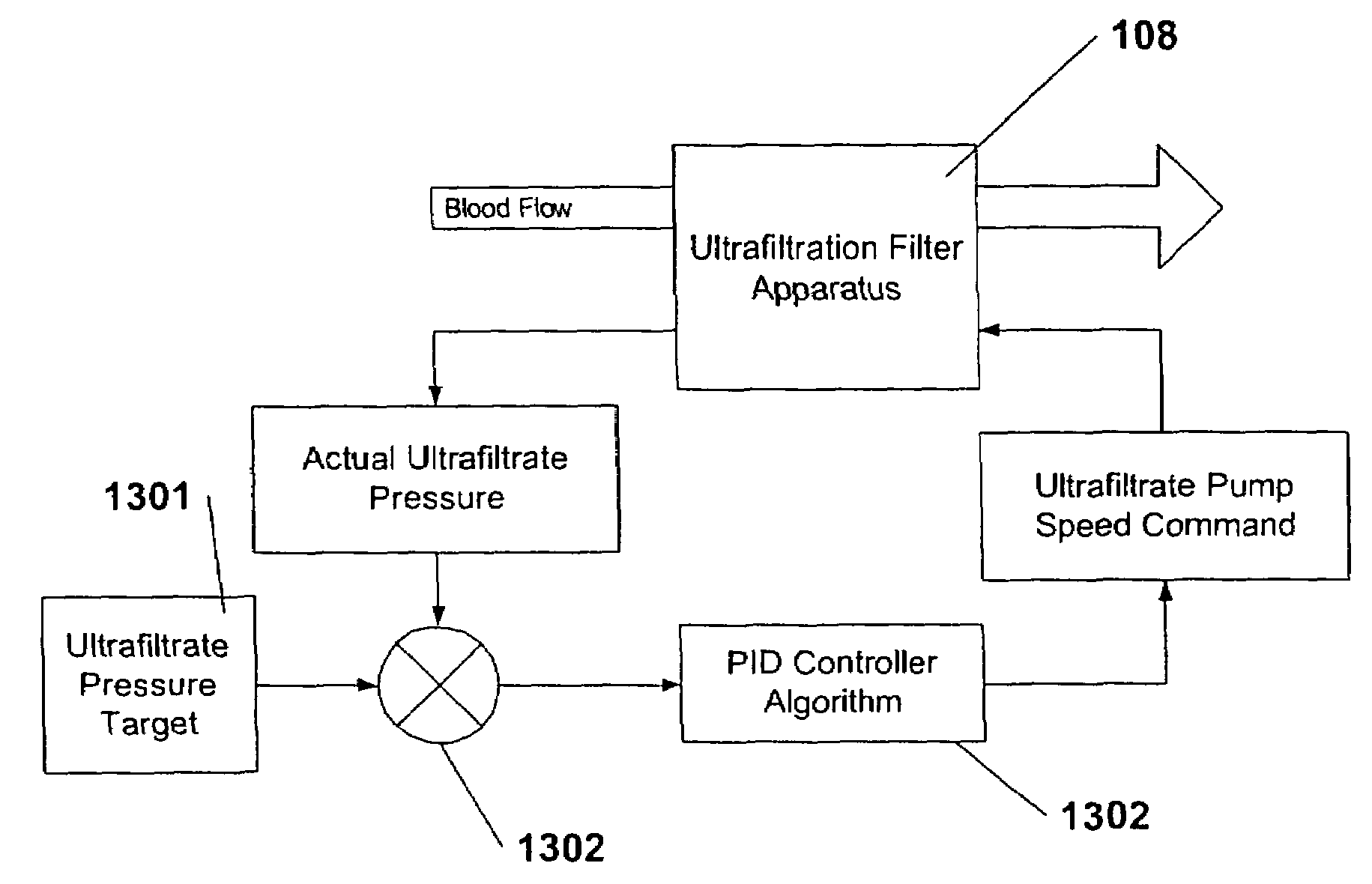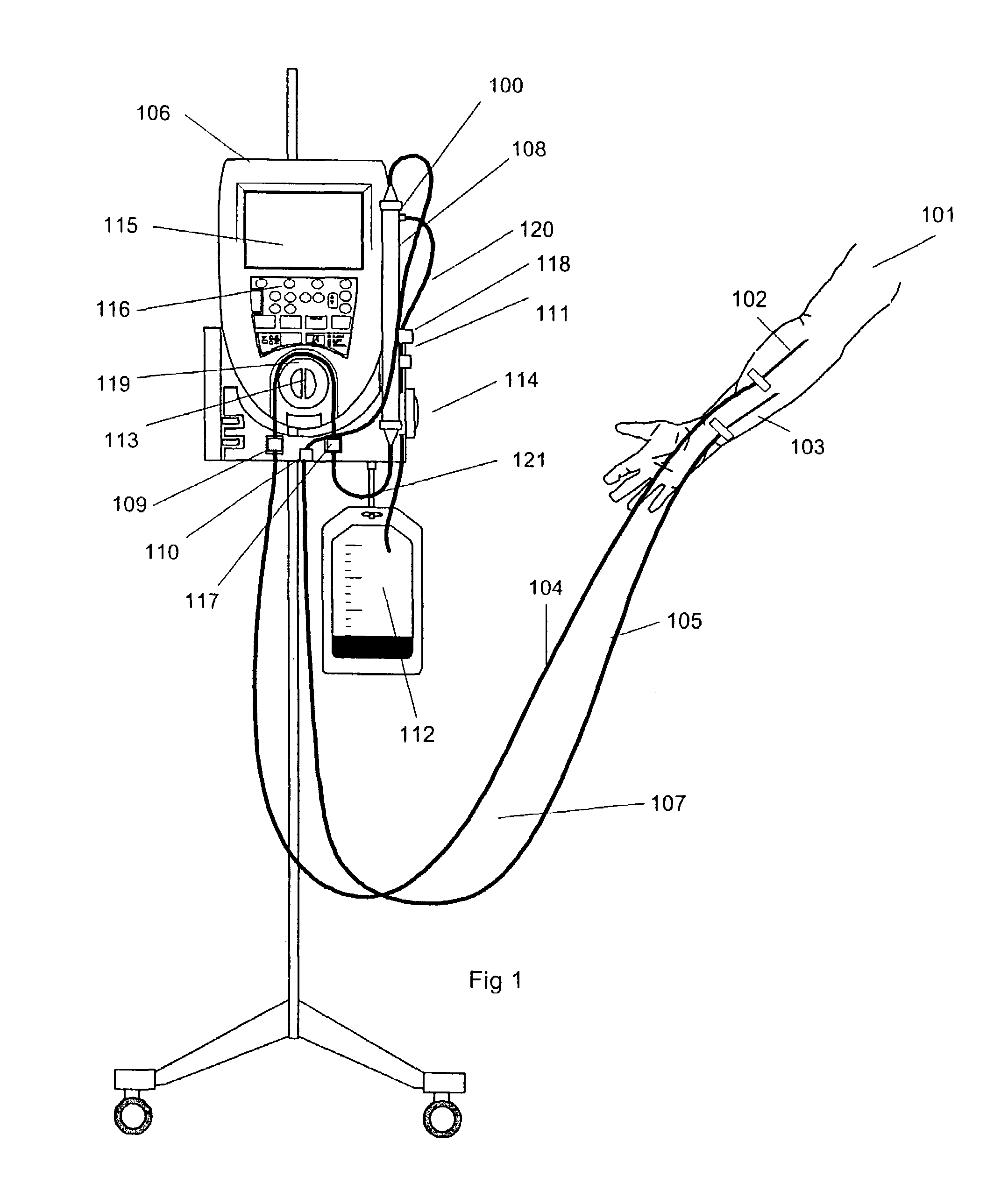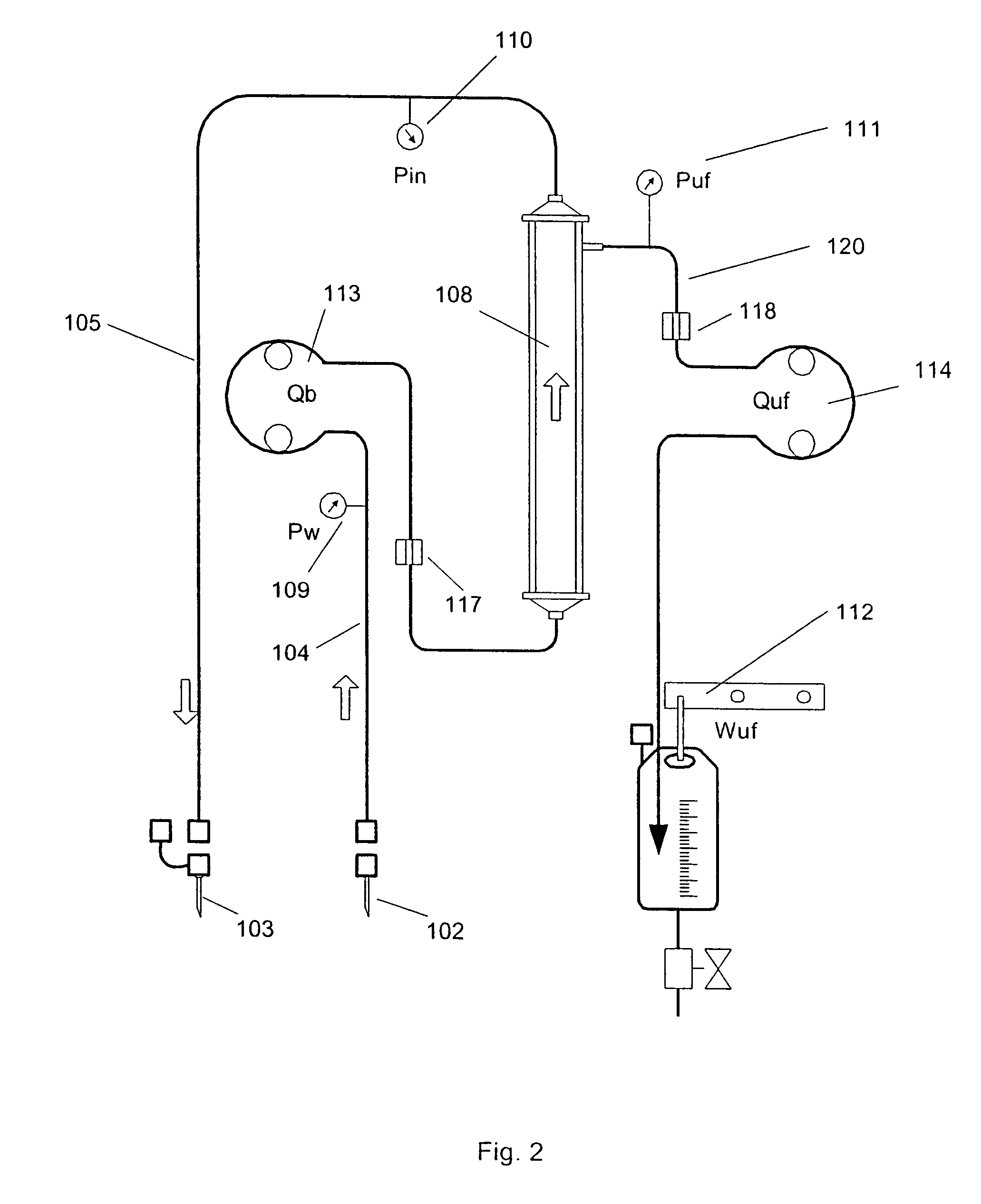Method to control blood and filtrate flowing through an extracorporeal device
a technology of extracorporeal devices and controllers, which is applied in the direction of other blood circulation devices, solvent extraction, separation processes, etc., can solve the problems of affecting the flow of blood, affecting the safety of patients, and affecting the control of blood withdrawal, so as to alleviate the partial occlusion and avoid the collapse of veins
- Summary
- Abstract
- Description
- Claims
- Application Information
AI Technical Summary
Benefits of technology
Problems solved by technology
Method used
Image
Examples
Embodiment Construction
[0034]A pump controller has been developed which may be incorporated in an extracorporeal blood circuit system. The disclosed system in an exemplary embodiment withdraws blood from a peripheral vein of a patient, processes the blood, e.g., passes the blood through a pump and filter, and returns the blood to the same or another peripheral vein. The vein used for blood withdrawal may be in a different arm of the patient than the vein used for blood infusion. The pump controller monitors the blood pressure in the blood circuit and adjusts the speed of the pump (and hence the blood flow rate through the circuit) to comply with multiple limits on the pressure level and flow rates in the circuit. In addition, the controller promptly reacts to any changes in the pressure in the circuit.
[0035]The withdrawal and infusion of blood from a peripheral vein (or peripheral artery) in a mammalian patient (whether the patient is a human or other mammal) presents unique problems, which have been succ...
PUM
| Property | Measurement | Unit |
|---|---|---|
| pressure | aaaaa | aaaaa |
| pressure | aaaaa | aaaaa |
| height | aaaaa | aaaaa |
Abstract
Description
Claims
Application Information
 Login to View More
Login to View More - R&D
- Intellectual Property
- Life Sciences
- Materials
- Tech Scout
- Unparalleled Data Quality
- Higher Quality Content
- 60% Fewer Hallucinations
Browse by: Latest US Patents, China's latest patents, Technical Efficacy Thesaurus, Application Domain, Technology Topic, Popular Technical Reports.
© 2025 PatSnap. All rights reserved.Legal|Privacy policy|Modern Slavery Act Transparency Statement|Sitemap|About US| Contact US: help@patsnap.com



